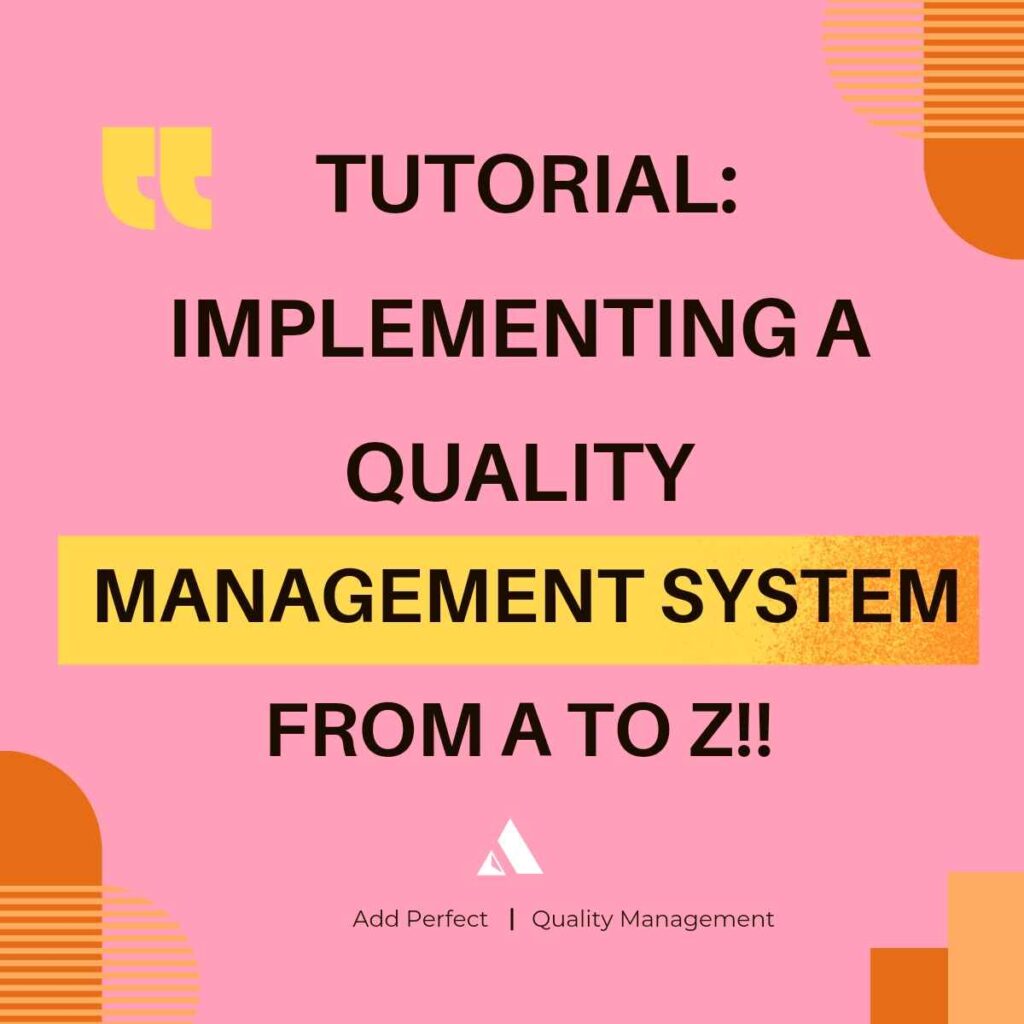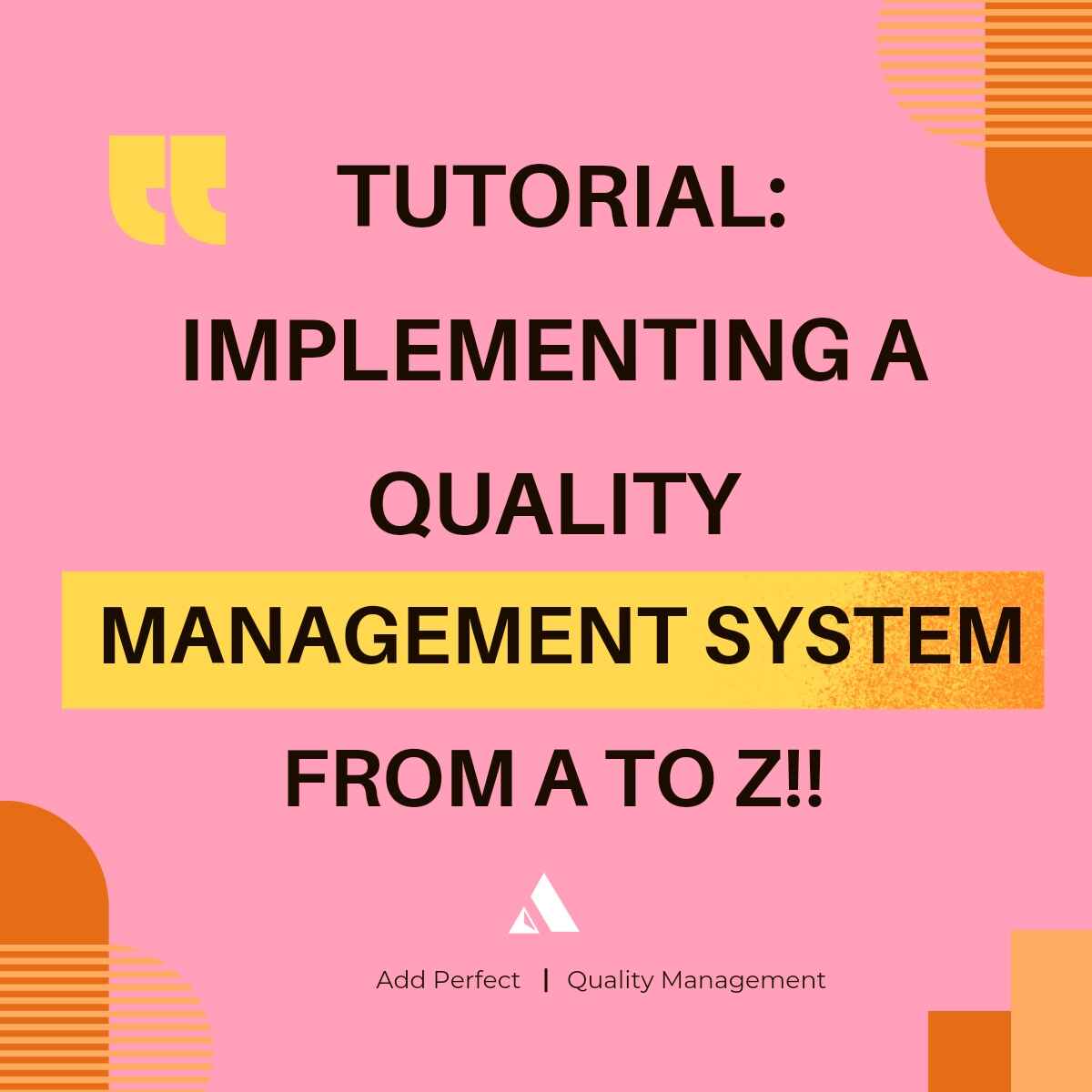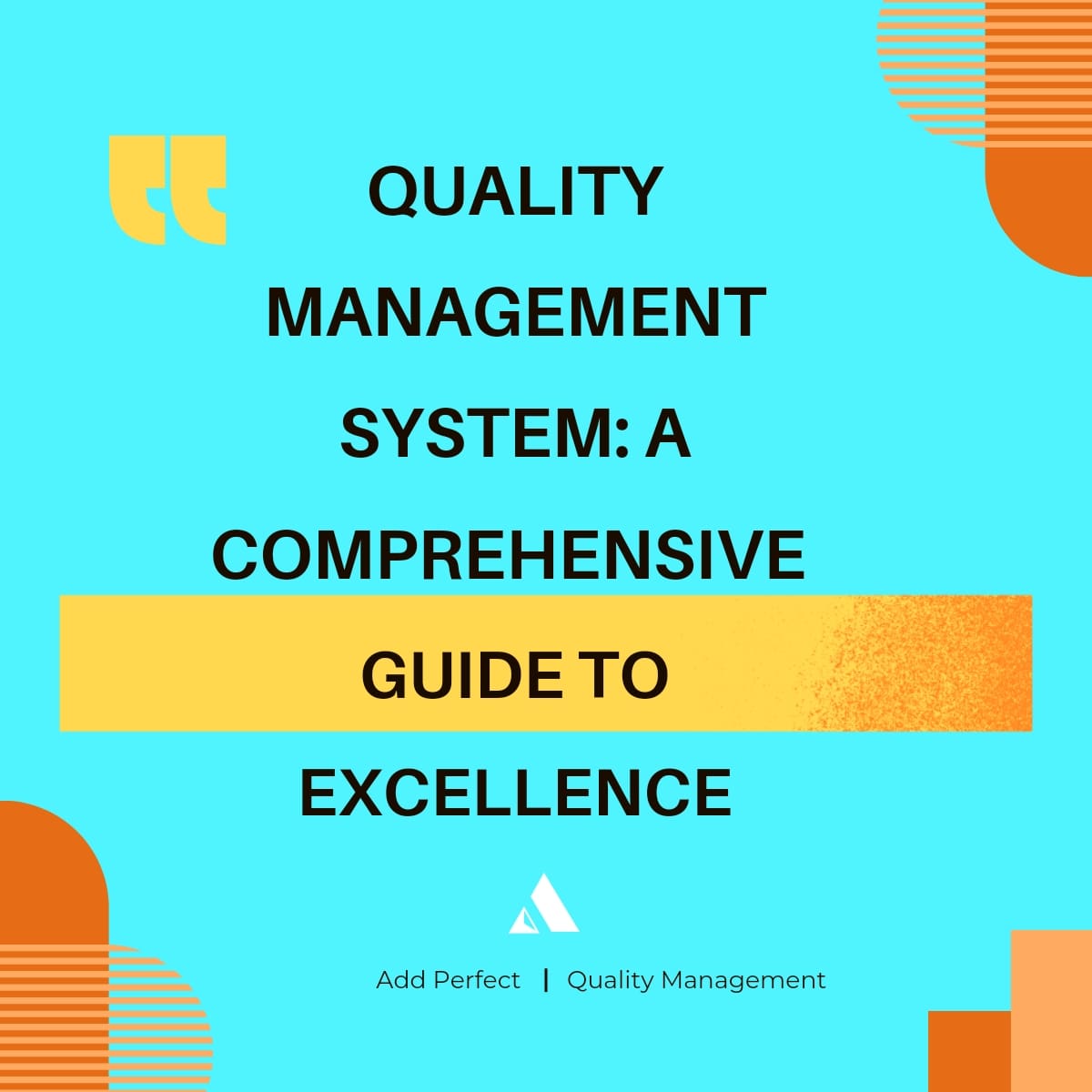Introduction
Implementing a Quality Management System (QMS) is essential for organizations seeking to enhance their operational efficiency, improve customer satisfaction, and ensure consistent quality in their products or services. A well-implemented QMS not only helps in meeting regulatory requirements but also drives continuous improvement across various business processes.
This tutorial will guide you through the comprehensive steps of implementing a Quality Management System from scratch. We’ll explore the key components, best practices, and practical tips necessary to establish a robust QMS. By the end of this guide, you’ll have a clear understanding of how to successfully implement a QMS in your organization.

What is a Quality Management System (QMS)?
A Quality Management System (QMS) is a structured system that defines the policies, procedures, and responsibilities required to achieve consistent quality in products or services. It ensures that all processes are controlled and monitored to meet customer and regulatory requirements effectively.
Table 1: Key Components of a Quality Management System
| Component | Description |
|---|---|
| Quality Policy | High-level statement of the organization’s quality goals. |
| Quality Objectives | Specific targets related to quality that the organization aims to achieve. |
| Quality Manual | Document that outlines the QMS structure, processes, and procedures. |
| Standard Operating Procedures (SOPs) | Detailed instructions on how specific processes should be performed. |
| Records and Documentation | Evidence of compliance and performance related to quality. |
| Internal Audits | Regular reviews of QMS processes to ensure adherence and identify improvements. |
| Management Review | Periodic assessment by management to evaluate QMS effectiveness and make strategic decisions. |
Steps to Implement a Quality Management System
1. Define the Scope and Objectives
Objective: Clearly outline the scope of the QMS and set measurable objectives that align with your organization’s strategic goals.
Actions:
- Identify Scope: Determine the areas of the organization that the QMS will cover.
- Set Objectives: Define specific, measurable, achievable, relevant, and time-bound (SMART) quality objectives.
Table 2: Example of QMS Objectives
| Objective | Description | Measurement Criteria |
|---|---|---|
| Reduce Defects | Decrease product defects by 20% within a year. | Defect rate statistics |
| Improve Customer Satisfaction | Increase customer satisfaction scores by 15%. | Customer feedback surveys |
| Enhance Process Efficiency | Improve process efficiency by reducing cycle time by 10%. | Process cycle time records |
2. Develop a Quality Policy
Objective: Create a quality policy that reflects the organization’s commitment to quality and sets the direction for the QMS.
Actions:
- Draft Policy: Develop a high-level statement that outlines the organization’s quality goals and commitment.
- Communicate Policy: Ensure the policy is communicated to all employees and stakeholders.
Table 3: Components of a Quality Policy
| Component | Description |
|---|---|
| Commitment to Quality | Statement of dedication to maintaining high-quality standards. |
| Customer Focus | Emphasis on meeting and exceeding customer expectations. |
| Continuous Improvement | Commitment to ongoing improvement and innovation. |
| Compliance | Assurance of adherence to relevant regulations and standards. |
3. Establish Quality Objectives and Targets
Objective: Set specific quality objectives and targets to guide the QMS and measure its effectiveness.
Actions:
- Define Objectives: Set clear and measurable quality targets aligned with the organization’s goals.
- Monitor Progress: Track performance against these objectives and adjust strategies as needed.
Table 4: Setting Quality Objectives
| Objective | Target | Measurement Method |
|---|---|---|
| Customer Satisfaction | Achieve 90% customer satisfaction rate. | Customer surveys and feedback |
| Product Quality | Reduce return rates to less than 2%. | Return and warranty data |
| Employee Training | Ensure 100% of employees complete training. | Training records |
4. Develop a Quality Manual
Objective: Create a quality manual that details the QMS framework, processes, and procedures.
Actions:
- Document Structure: Outline the structure and contents of the quality manual.
- Include Procedures: Detail the processes, responsibilities, and methods used to ensure quality.
Table 5: Sections of a Quality Manual
| Section | Description |
|---|---|
| Introduction | Overview of the QMS and its purpose. |
| Scope | Definition of the scope and applicability of the QMS. |
| Processes | Detailed description of key processes and procedures. |
| Roles and Responsibilities | Assignment of responsibilities for quality management. |
| Documentation | Guidelines for managing and maintaining quality records. |
5. Implement Standard Operating Procedures (SOPs)
Objective: Develop and implement SOPs to standardize processes and ensure consistent quality.
Actions:
- Create SOPs: Draft detailed procedures for critical processes.
- Train Employees: Ensure all employees are trained on the SOPs and understand their roles.
Table 6: Elements of an SOP
| Element | Description |
|---|---|
| Title | Title of the procedure. |
| Purpose | Objective of the procedure. |
| Scope | Applicability of the procedure. |
| Responsibilities | Roles and responsibilities involved. |
| Procedure | Step-by-step instructions for performing the task. |
| References | Related documents or standards. |
6. Conduct Training and Awareness Programs
Objective: Train employees on the QMS and ensure they understand their roles in maintaining quality.
Actions:
- Develop Training Programs: Create training materials and programs relevant to the QMS.
- Schedule Training: Plan and conduct training sessions for all relevant employees.
Table 7: Types of Training Programs
| Program | Description | Audience |
|---|---|---|
| Onboarding Training | Initial training for new employees on QMS procedures. | New hires |
| Continuous Education | Ongoing training to update employees on changes in the QMS. | Existing employees |
| Specialized Training | Training focused on specific roles or processes. | Specialized roles or teams |
7. Implement a Monitoring and Measurement System
Objective: Establish a system for monitoring and measuring the effectiveness of the QMS.
Actions:
- Select Metrics: Choose appropriate metrics to evaluate quality performance.
- Monitor Performance: Regularly review and analyze performance data.
Table 8: Common Quality Metrics
| Metric | Description | Example Measurement |
|---|---|---|
| Defect Rate | Percentage of defective products or services. | Number of defects per 1,000 units |
| Customer Satisfaction | Degree of customer satisfaction with the service. | Customer satisfaction score |
| Process Efficiency | Measure of how efficiently a process operates. | Time taken to complete a process |
8. Conduct Internal Audits
Objective: Perform internal audits to assess compliance with the QMS and identify areas for improvement.
Actions:
- Plan Audits: Schedule regular internal audits based on the QMS requirements.
- Perform Audits: Conduct audits to evaluate adherence to procedures and standards.
Table 9: Internal Audit Process
| Step | Description | Responsible Party |
|---|---|---|
| Audit Planning | Develop an audit plan and schedule. | Audit Manager |
| Conducting the Audit | Execute the audit according to the plan. | Auditors |
| Reporting Findings | Document and report audit findings. | Lead Auditor |
| Corrective Actions | Implement corrective actions based on findings. | Relevant Departments |
9. Review and Improve
Objective: Regularly review the QMS and make improvements based on performance data and feedback.
Actions:
- Management Review: Conduct periodic reviews to assess the effectiveness of the QMS.
- Implement Improvements: Make necessary changes and improvements to enhance the QMS.
Table 10: Continuous Improvement Process
| Step | Description | Example |
|---|---|---|
| Review Performance | Analyze QMS performance data and feedback. | Evaluate audit results and customer feedback |
| Identify Improvements | Determine areas for improvement based on review. | Identify process bottlenecks or deficiencies |
| Implement Changes | Make necessary adjustments to the QMS. | Revise SOPs or update training programs |
| Monitor Results | Track the impact of changes and adjust as needed. | Monitor performance metrics post-implementation |
FAQ: Implementing a Quality Management System
Certainly! Here’s the continuation of the FAQ section and the conclusion for the article “Tutorial: Implementing a Quality Management System from A to Z!”:
FAQ: Implementing a Quality Management System
1. What are the benefits of implementing a Quality Management System (QMS)?
Implementing a QMS offers several benefits, including:
- Improved Customer Satisfaction: Consistent quality leads to higher customer satisfaction and loyalty.
- Increased Efficiency: Streamlined processes reduce waste and improve operational efficiency.
- Regulatory Compliance: Ensures adherence to industry regulations and standards.
- Enhanced Decision-Making: Data-driven insights help in making informed decisions.
- Continuous Improvement: Encourages ongoing enhancement of processes and practices.
2. How long does it take to implement a QMS?
The time required to implement a QMS varies based on the size of the organization and the complexity of processes. On average, it may take between 6 to 12 months to fully implement and integrate a QMS, including training and process adjustments.
3. What are the common challenges in implementing a QMS?
Common challenges include:
- Resistance to Change: Employees may resist new processes or changes.
- Resource Constraints: Limited resources can hinder the implementation process.
- Complexity of Documentation: Developing and maintaining extensive documentation can be challenging.
- Training Requirements: Ensuring that all employees are adequately trained can be resource-intensive.
4. How can I ensure employee engagement during QMS implementation?
To ensure employee engagement:
- Communicate Clearly: Explain the benefits and goals of the QMS to all employees.
- Involve Employees: Include staff in the development and implementation phases.
- Provide Training: Offer comprehensive training and support.
- Recognize Contributions: Acknowledge and reward employee efforts and achievements related to the QMS.
5. What role does top management play in QMS implementation?
Top management plays a crucial role by:
- Providing Leadership: Setting the vision and direction for the QMS.
- Allocating Resources: Ensuring adequate resources are available for implementation.
- Supporting Training: Investing in employee training and development.
- Reviewing Performance: Conducting regular reviews of QMS performance and making strategic decisions.
6. How do I handle non-conformities in the QMS?
Handling non-conformities involves:
- Identifying Issues: Detect and document any deviations from the QMS standards.
- Root Cause Analysis: Investigate the root causes of the non-conformities.
- Corrective Actions: Implement corrective measures to address and rectify the issues.
- Follow-Up: Monitor the effectiveness of corrective actions and make further adjustments if necessary.
7. What is the role of documentation in a QMS?
Documentation is essential for:
- Standardization: Ensuring consistent processes and procedures.
- Compliance: Providing evidence of adherence to quality standards and regulations.
- Training: Serving as a reference for training and employee guidance.
- Continuous Improvement: Facilitating the review and enhancement of processes.
8. How can technology support QMS implementation?
Technology supports QMS implementation by:
- Automating Processes: Streamlining and automating repetitive tasks and processes.
- Data Analysis: Providing tools for data collection, analysis, and reporting.
- Document Management: Facilitating the creation, storage, and retrieval of documentation.
- Communication: Enhancing communication and collaboration through digital platforms.
9. What are some common mistakes to avoid when implementing a QMS?
Common mistakes to avoid include:
- Lack of Leadership Support: Inadequate backing from top management.
- Inadequate Training: Insufficient training for employees on QMS procedures.
- Ignoring Feedback: Failing to address feedback from employees and customers.
- Overcomplicating Processes: Implementing overly complex processes that are difficult to manage.
10. How do I measure the success of my QMS implementation?
Success can be measured by:
- Performance Metrics: Tracking key performance indicators (KPIs) related to quality.
- Customer Feedback: Evaluating customer satisfaction and feedback.
- Audit Results: Reviewing findings from internal and external audits.
- Improvement Trends: Monitoring improvements in process efficiency and product quality over time.
Conclusion
Implementing a Quality Management System (QMS) is a strategic approach that can significantly enhance an organization’s performance and customer satisfaction. By following the comprehensive steps outlined in this tutorial, organizations can establish a robust QMS that aligns with their strategic objectives and drives continuous improvement.

Key Takeaways:
- Define Clear Objectives: Establish specific goals and objectives for your QMS.
- Develop Comprehensive Documentation: Create detailed quality manuals, SOPs, and policies.
- Engage and Train Employees: Ensure all staff are trained and involved in the QMS process.
- Monitor and Review: Regularly assess QMS performance and make necessary improvements.
- Leverage Technology: Use technology to support and streamline QMS processes.
By addressing each aspect of QMS implementation and maintaining a focus on continuous improvement, organizations can achieve high standards of quality, improve operational efficiency, and enhance customer satisfaction. Implementing a QMS is not just about meeting regulatory requirements; it’s about fostering a culture of excellence and driving long-term success.
Incorporating these practices and adhering to the principles of quality management will enable organizations to thrive in a competitive environment, delivering superior products and services that meet and exceed customer expectations.




I just could not leave your web site before suggesting that I really enjoyed the standard information a person supply to your visitors Is gonna be again steadily in order to check up on new posts